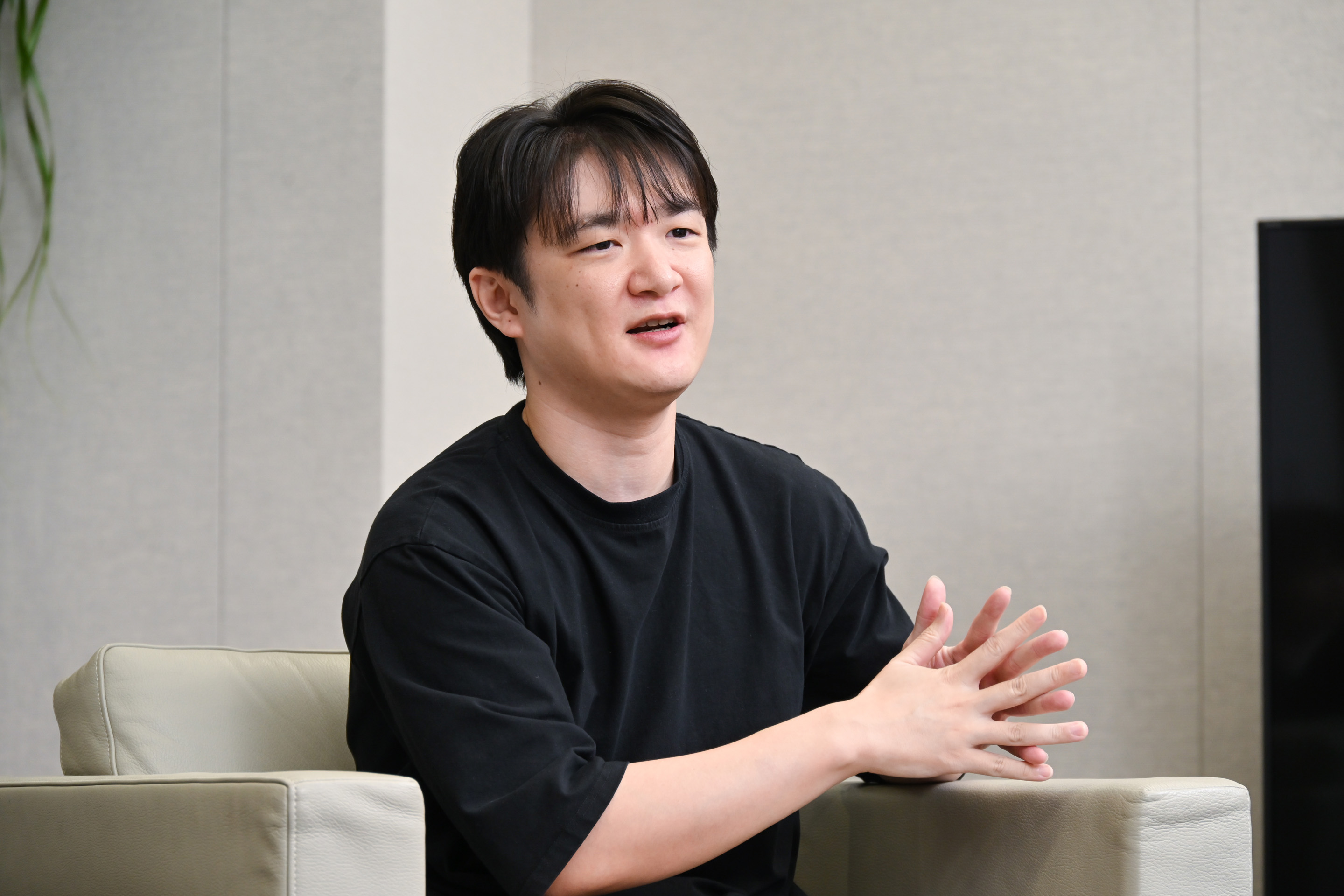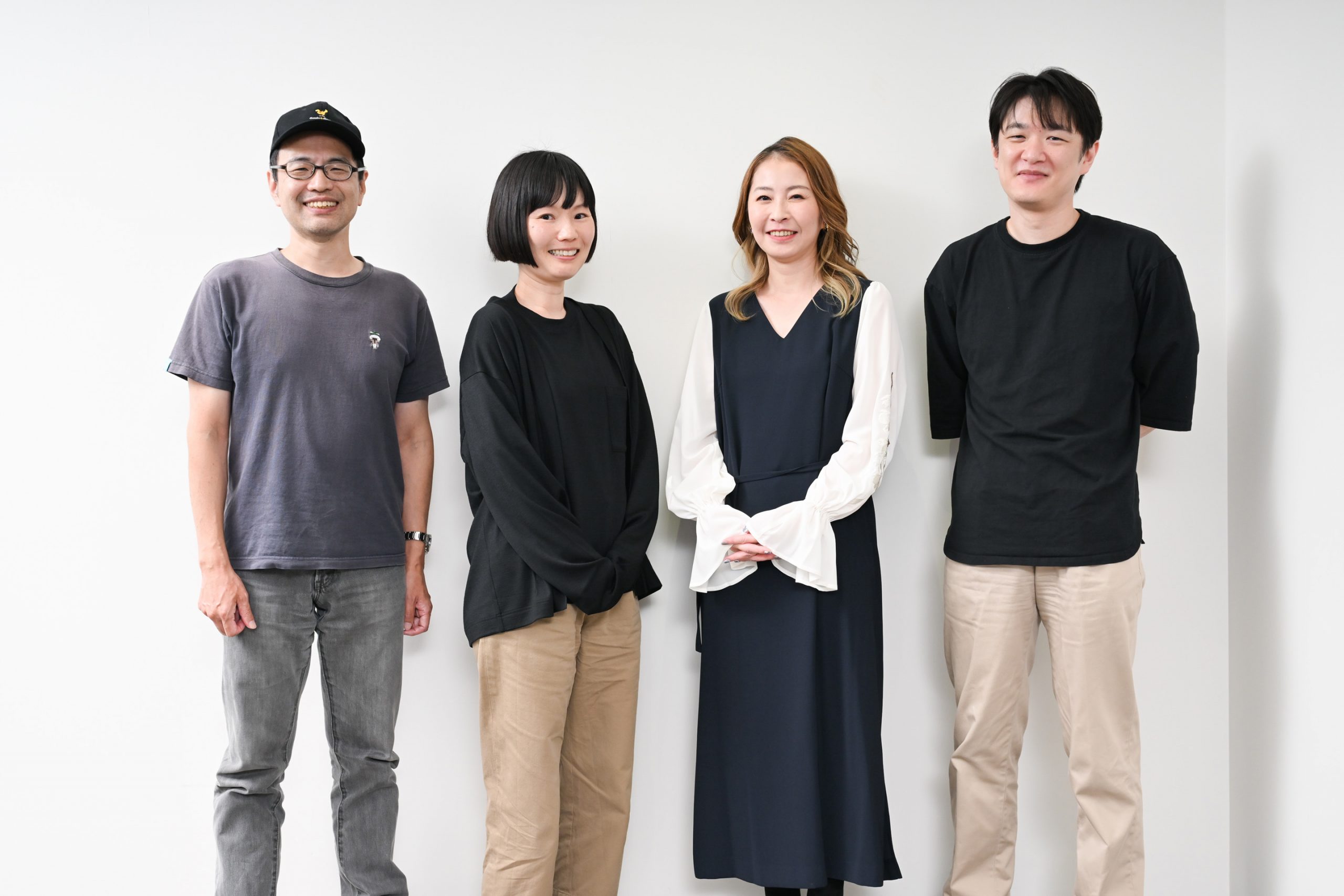"WE DISCUSS VANA'DIEL" is a series of conversations between Producer Fujito and special guests who are familiar with FINAL FANTASY XI (FFXI). Here in Season 2, we're featuring conversations between Producer Fujito and the development team in regards to the middle and later stages of FFXI's creation, including the various expansion packs and additional scenarios that have been released over the years.
The topic of this episode focuses on the story of Treasures of Aht Urhgan, the game's third expansion pack. We spoke with Mihoko Kato, Kumiko Takahashi, and Masatoshi Ishikawa, who were responsible for its story and event scenes, about their work as part of the development team at the time.
Treasures of Aht Urhgan was the third expansion for FFXI and was released on April 20, 2006. It served as a large departure from the adventure up until that point, with the setting for the story shifting to the Empire of Aht Urhgan in the continent of Aradjiah in the Near East. Players join the mercenary organization known as Salaheem's Sentinels, working under its leader, Naja Salaheem. Once there, they encounter a variety of characters, including the Royal Puppeteer known as Aphmau and her automaton companions Ovjang and Mnejing, the Yagudo swordsman Gessho, the ghost ship captain Luzaf, and many other unique NPCs.
The city of Aht Urhgan Whitegate also introduced new facilities that were frequently requested by players, such as an auction house and guilds. Combined with the ability to join various in-game content and the ability to teleport around the world, it served as a new home base for adventurers coming from the Grand Duchy of Jeuno. The expansion also added multiple new areas to the game, including the beastman territories of Mamook, Halvung, and the Arrapago Reef, as well as the Wajaom Woodlands, Mount Zhayolm, and the Caedarva Mire.
It also introduced three new job classes to the game: blue mage, corsair, and the puppetmaster. The expansion's battle content included Besieged, which is a large-scale battle where up to 700 adventurers fight to defend the city; Assault, where players participate in various missions to boost their mercenary rank; and Salvage, which forces players to start each area with all of your equipment removed. In addition to the battle content, other new features were also added, including the ability to breed and race chocobos, and Pankration, which pits captured monsters against each other in battle.
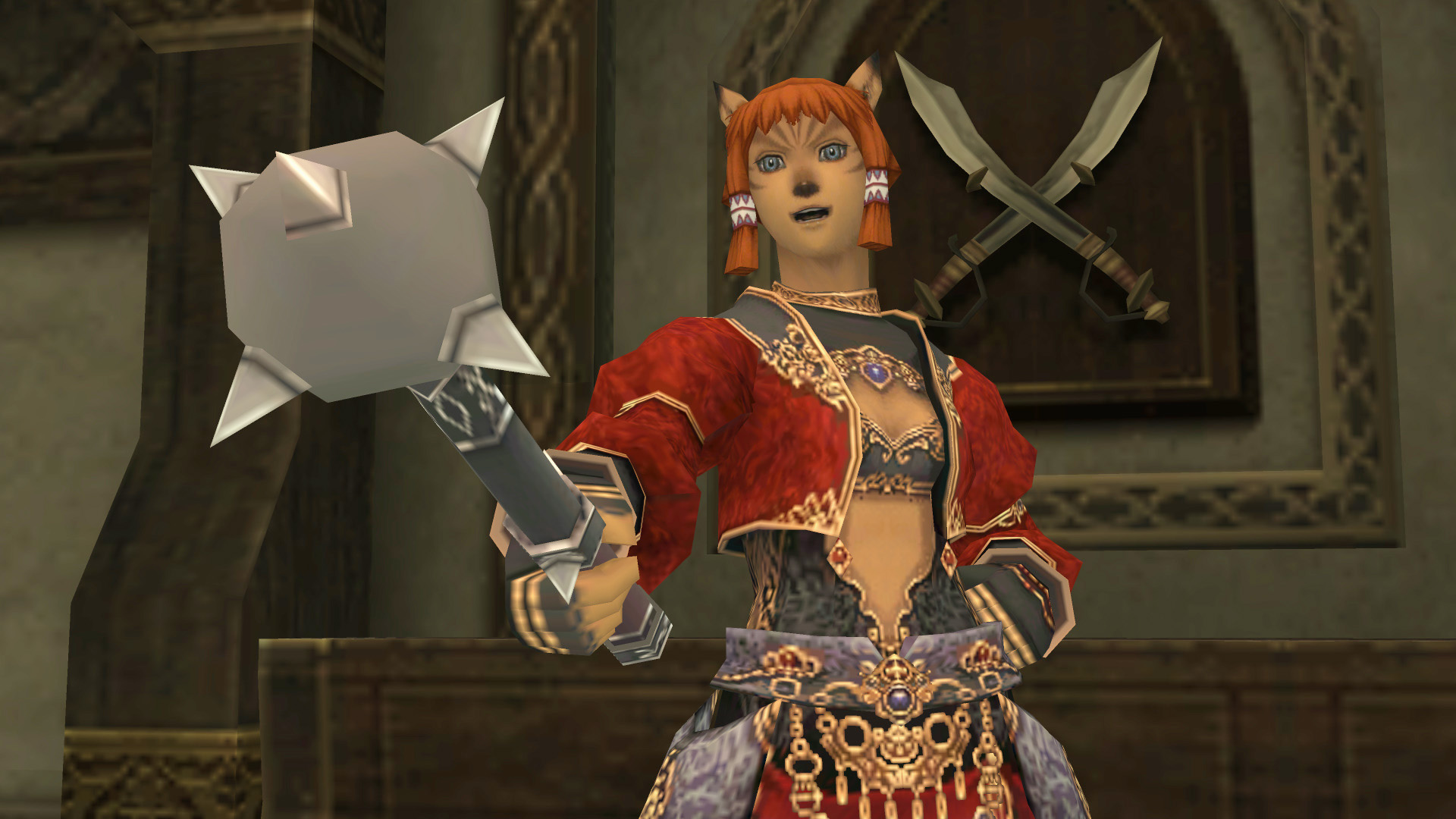
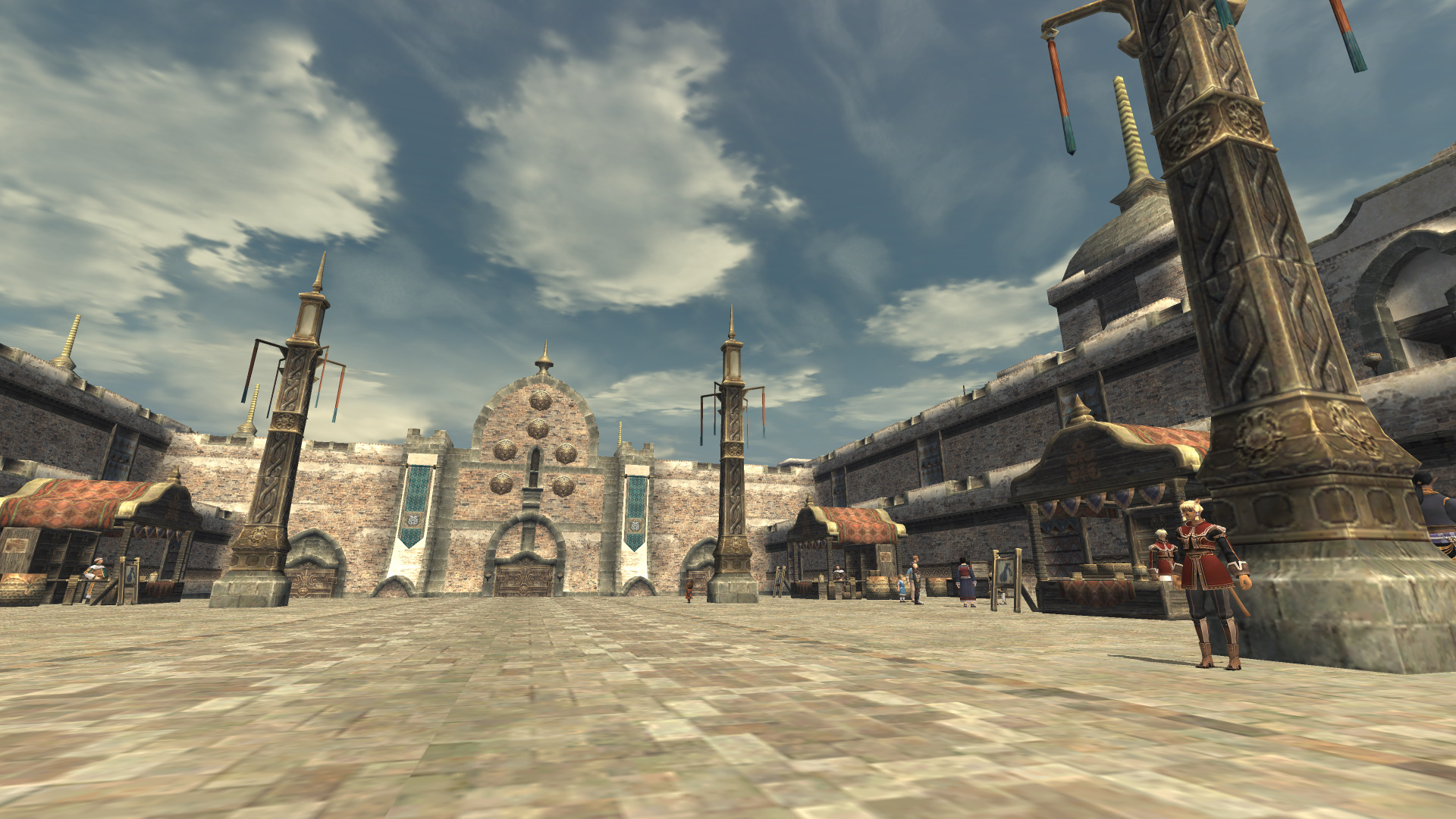
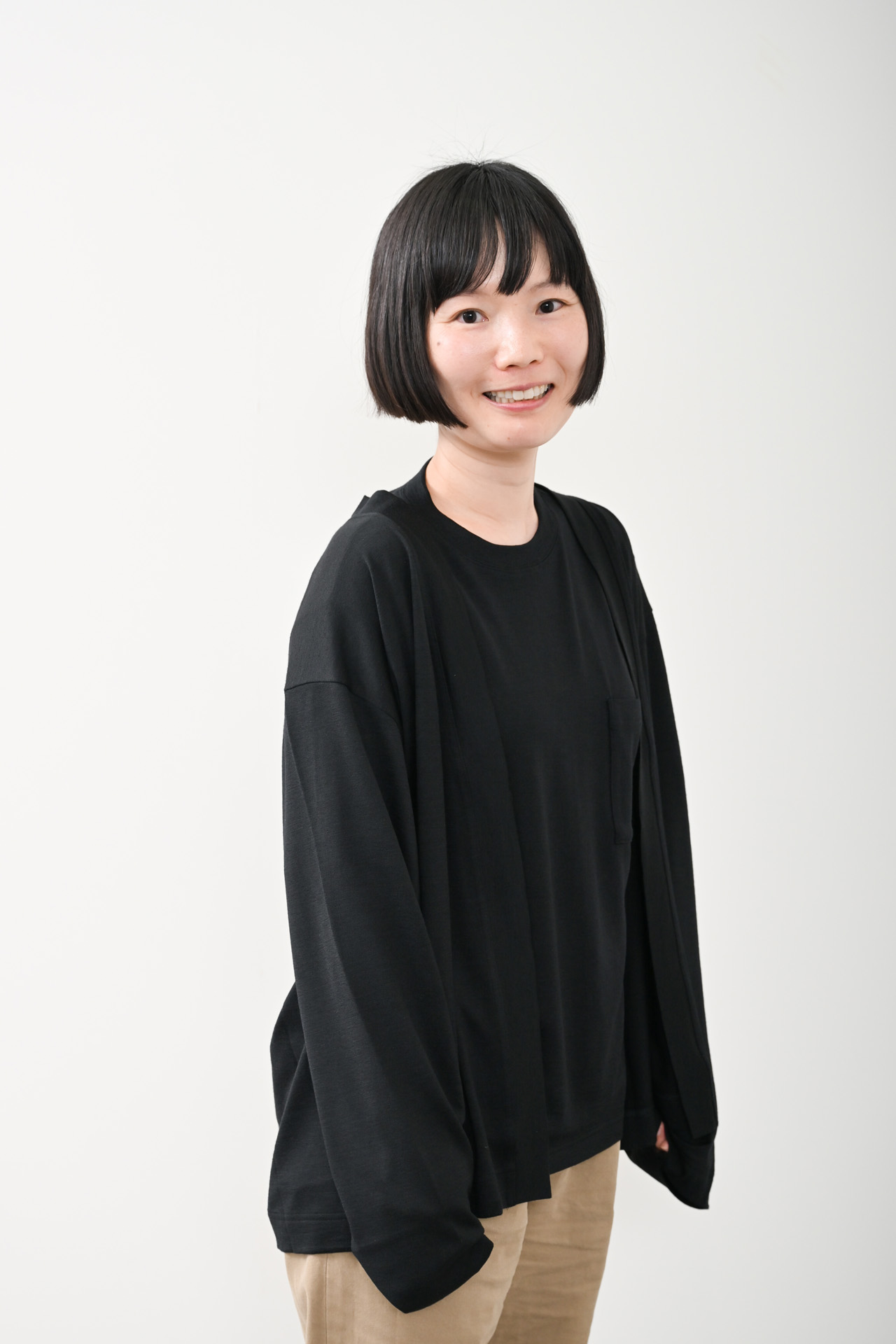
She originally joined Square-Enix as a 4th term trainee. She was assigned to the FFXI team, where she worked on the Adventuring Fellow scenarios, among other duties. As the lead writer for Treasures of Aht Urhgan, she was responsible for the stories attached to its missions and quests.

She was assigned to the FFXI team as a 5th term trainee and later worked on the development team for Kingdom Hearts II. Afterwards, she rejoined the FFXI team for Treasures of Aht Urhgan, where she worked on the expansion's quests. She also served as the lead writer for Wings of the Goddess.
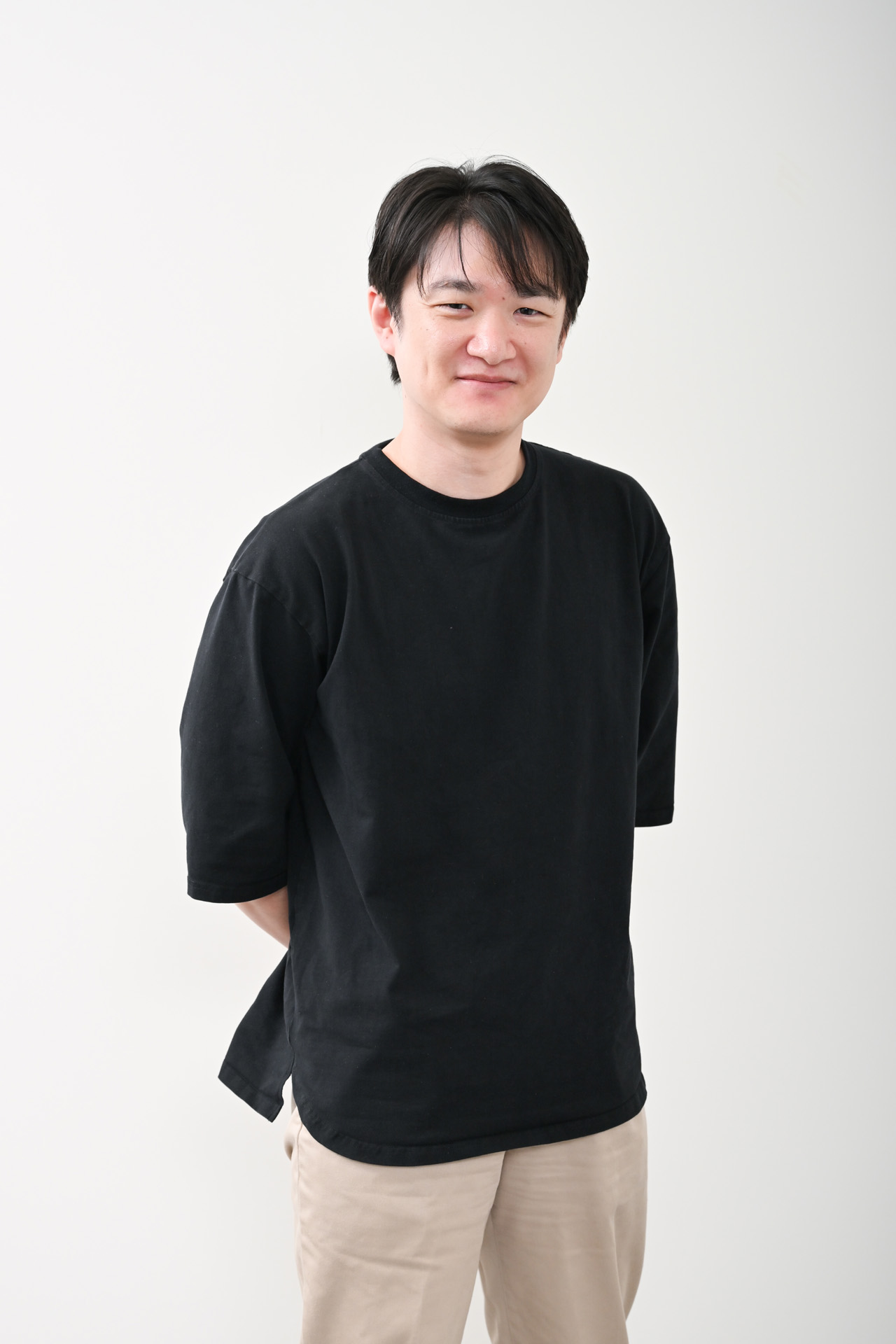
As a 3rd term trainee, he was assigned to the FFXI team from Chains of Promathia and mainly worked on the game's system-related elements. For Treasures of Aht Urhgan, he worked on the mini-games, various game systems, and also the puppetmaster artifact quests. He is currently working as a battle content designer for FFXIV.
A trainee system that produced amazing new talent
Today, I'd mainly like to talk about everyone's work on Treasures of Aht Urhgan's story, but can you first tell us about how you were assigned to the FFXI team?
- Kato
After my work on the FFXI team as a trainee, I officially joined the company and was assigned to the FFXI team around the time that work on Treasures of Aht Urhgan kicked off.
Were you immediately assigned to the FFXI team at the start of your training period?
- Kato
Yes. At the time, Square-Enix had an employee trainee program where you worked on multiple different projects over the course of three months, spending a month on each one. And the system was set up so that if you didn't pass the first month, you wouldn't be there for the second...
- Ishikawa
We were weeded out by the process of elimination.
- Kato
It was like survival of the fittest...
- Takahashi
There was always the possibility that the friends you made wouldn't be there the following month. (laughs wryly)
So one of the places you were assigned to for training was the FFXI team.
- Ishikawa
Yes, that's right. All three of us were trainees there.
- Kato
Mr. Ishikawa was a 3rd term trainee, I was a 4th term, and Ms. Takahashi was a 5th term. So we all joined the company about six months apart.
- Takahashi
It felt like we all joined the company at the same time since we entered the program within such close proximity of each other.
Were there a lot of trainees joining the FFXI team at the time?
- Ishikawa
I was told that the FFXI team was an excellent place to do your training. It was because FFXI was a project that was already live and it also received regular updates. So in other words, it allowed you to experience everything from planning to production, as well as the ability to implement everything in the game and then receive immediate feedback, all within a short period of time, which made it the perfect project to train new employees.
- Fujito
Thanks to the training program, the FFXI team was able to grow considerably in size too. Like what Mr. Komoto* mentioned before (see Season 2, Episode 1), there was a point when we were finally able to add more people to the team, and this trainee system was one of the ways that we did so.
* Nobuaki Komoto, director on Chains of Promathia. So you were able to welcome many talented newcomers to the FFXI team.
- Fujito
Yes, exactly. As long as there weren't any issues with the plot, we didn't care that it was written by a trainee. We received support from Mr. Komoto, Mr. Saito*, and Ms. Sato* to implement it within the game.
* Yoshitsugu Saito, planner for FFXI and responsible for the direction of the cutscenes. * Yaeko Sato, planner for the Windurst and Chains of Promathia scenarios.
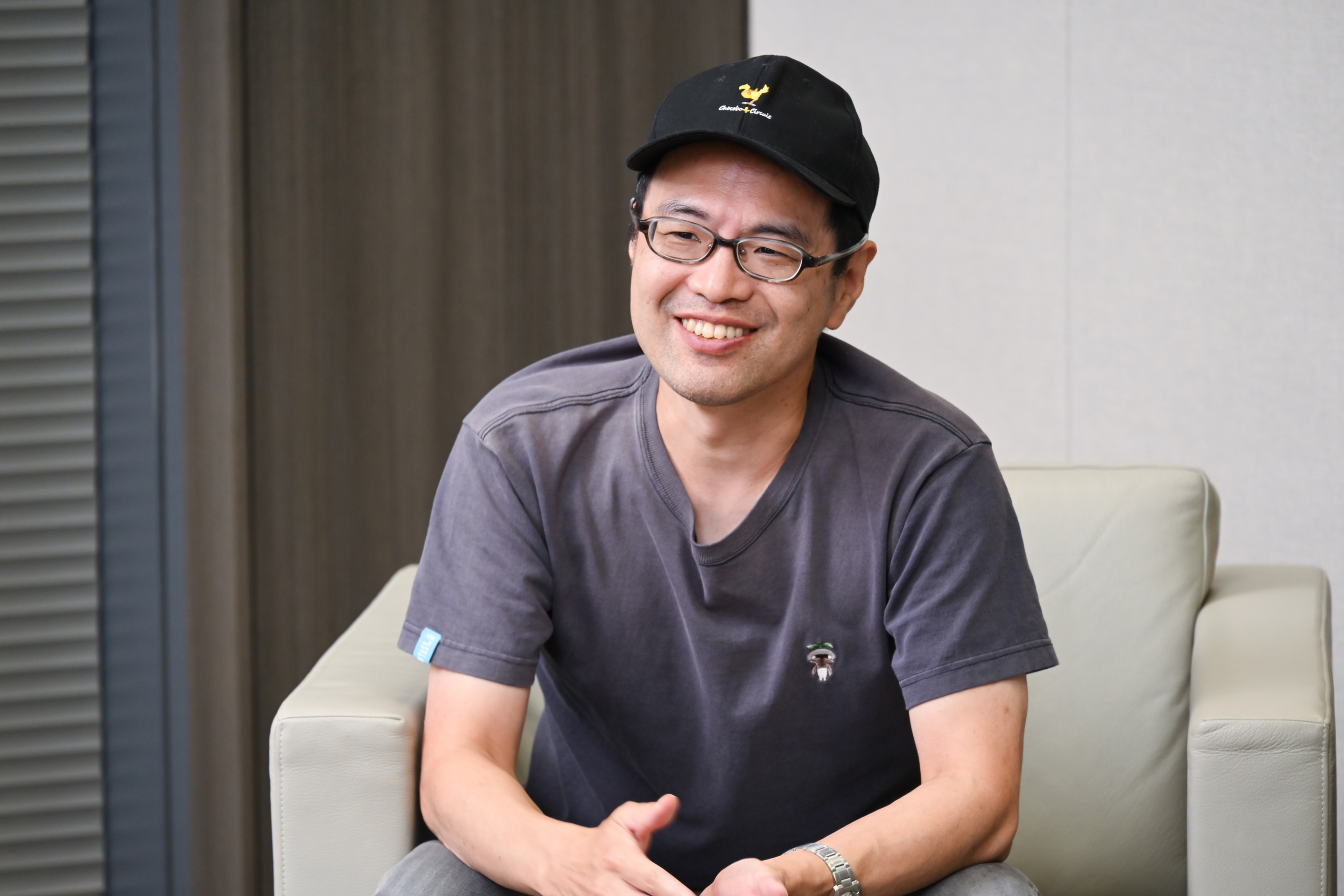
- Takahashi
FFXI featured a training course where you would outline a plan for the game, write a scenario for it, and then turn it into a script* so that you could test it in-game, all within the span of a single month. Naturally, a supervisor would be monitoring your progress every step of the way. That process made for good training though, as I was able to learn the basics of game development from it.
* A simplified programming language developed specifically for FFXI. - Fujito
It's a great system because once it's implemented, you can receive feedback from players almost immediately.
- Ishikawa
Actually, some of the more popular quests in Treasures of Aht Urhgan were created by trainees in just a single month.
- Kato
That's how the quests “A Taste of Honey” and “Not Meant to Be” were made too.
- Takahashi
I think that most of the things we created during the training period were actually implemented within the game.
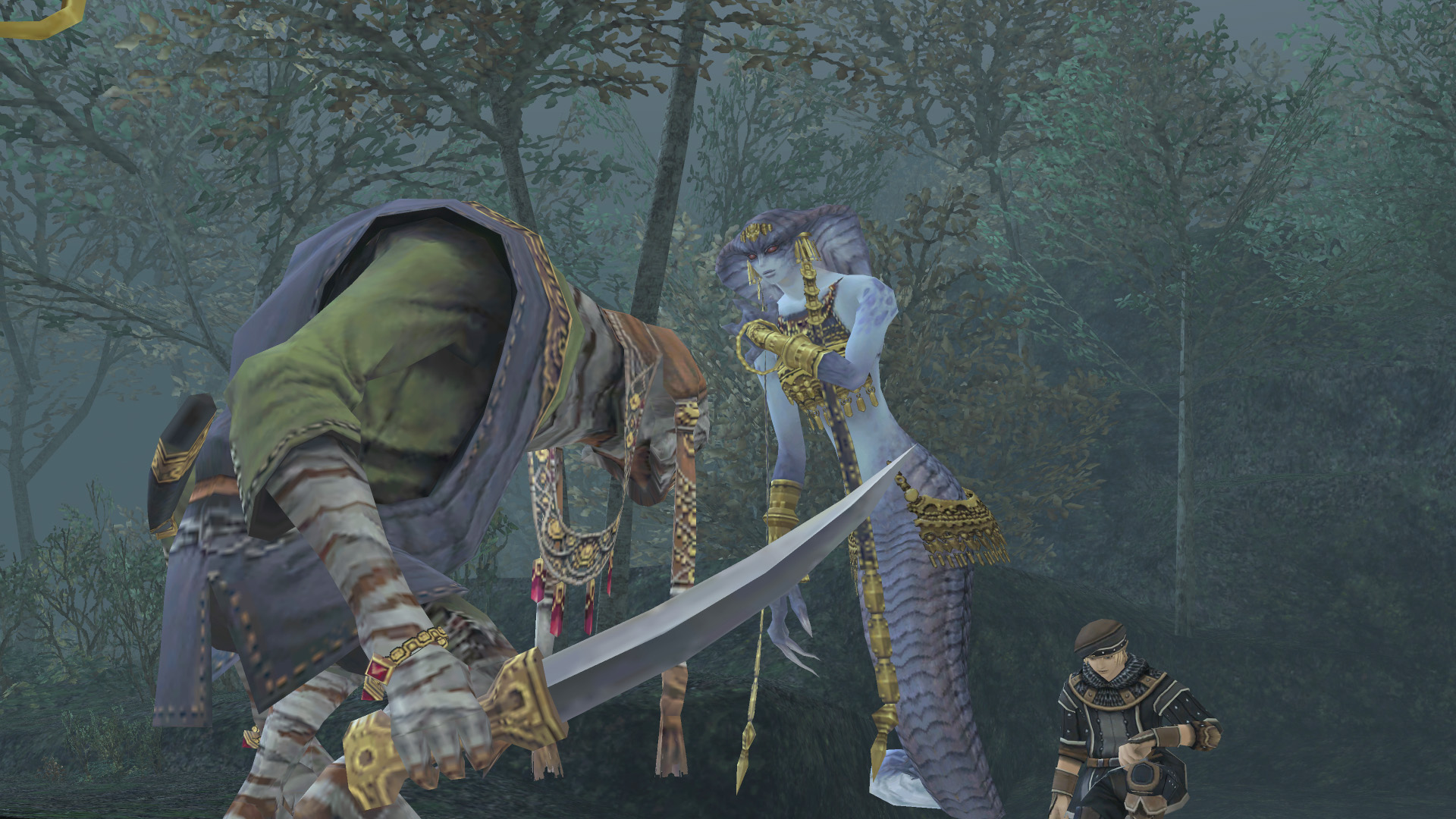
Did all of you complete the training period and then get assigned to the FFXI team?
- Kato
Yes. I was still a student at the time, so I could only work about three days a week for the first six months.
- Takahashi
After completing my training period on FFXI, I was assigned to the Kingdom Hearts II team. Once it was released, I joined the FFXI team. Timing-wise, I think it was just before the release of Treasures of Aht Urhgan.
Why were you placed on the FFXI team again?
- Takahashi
I was actually playing FFXI even before I joined the company. FFXI features an elaborate setting, and the game aspects such as the job classes and battles are also quite nuanced. As such, I think that as someone who played the game and already possessed that familiarity, I was a perfect fit for the FFXI team.
It must be quite difficult to try and explain FFXI from scratch, and it would definitely take a considerable amount of time for someone to play the game and get caught up.
- Kato
Shortly before the release of Treasures of Aht Urhgan, Mr. Komoto was trying to recruit increasingly large numbers of trainees from each team. That was because there were so many people leaving the FFXI team at the time, including Mr. Kigoshi*, Ms. Sato, and Mr. Komoto as well. I'm certain it was Mr. Komoto's intention to have Mr. Saito look after the trainees so that he could grow as a leader through teaching them, and to have the trainees grow their own skills by working hard on a new project.
* Yusuke Kigoshi, planner for FFXI and the person in charge of quest direction. - Fujito
I have always been impressed by Mr. Komoto's ability to build a team.
When did you join the FFXI team, Mr. Ishikawa?
- Ishikawa
It was right before Chains of Promathia. I was essentially brought in as a member of its development team. My first training assignment was to the FFXI team, but compared to Ms. Kato and Ms. Takahashi, I was working more on the game system elements.
What was your specific role on Chains of Promathia?
- Ishikawa
The first job I was given was to create the in-game systems for things like the manaclipper and the Carpenters' Landing barge. Aside from that, I also worked on some mini-games, such as the summer festival's Gauntlet Challenge.
- Kato
I started my training right before the release of Chains of Promathia and I remember noticing later on that the Tavnazia quest that I created for it had been implemented in the game. Ms. Takahashi joined as a trainee right when we were making quests for Tavnazia, and we worked on the mannequin quests.
- Ishikawa
Ms. Kato, you also wrote the Adventuring Fellow scenarios, right?
- Kato
Yes! And you created the fellowship system itself.
- Ishikawa
I also wrote the lines for the fellows' personalities.
- Fujito
The fellows have different tones depending on their personality, so Mr. Ishikawa and everyone on the team worked really hard to create so many different variations. Although, when the level cap was raised to level 99, they had to come up with all-new lines for each one of them, which must've been quite difficult. (laughs wryly)
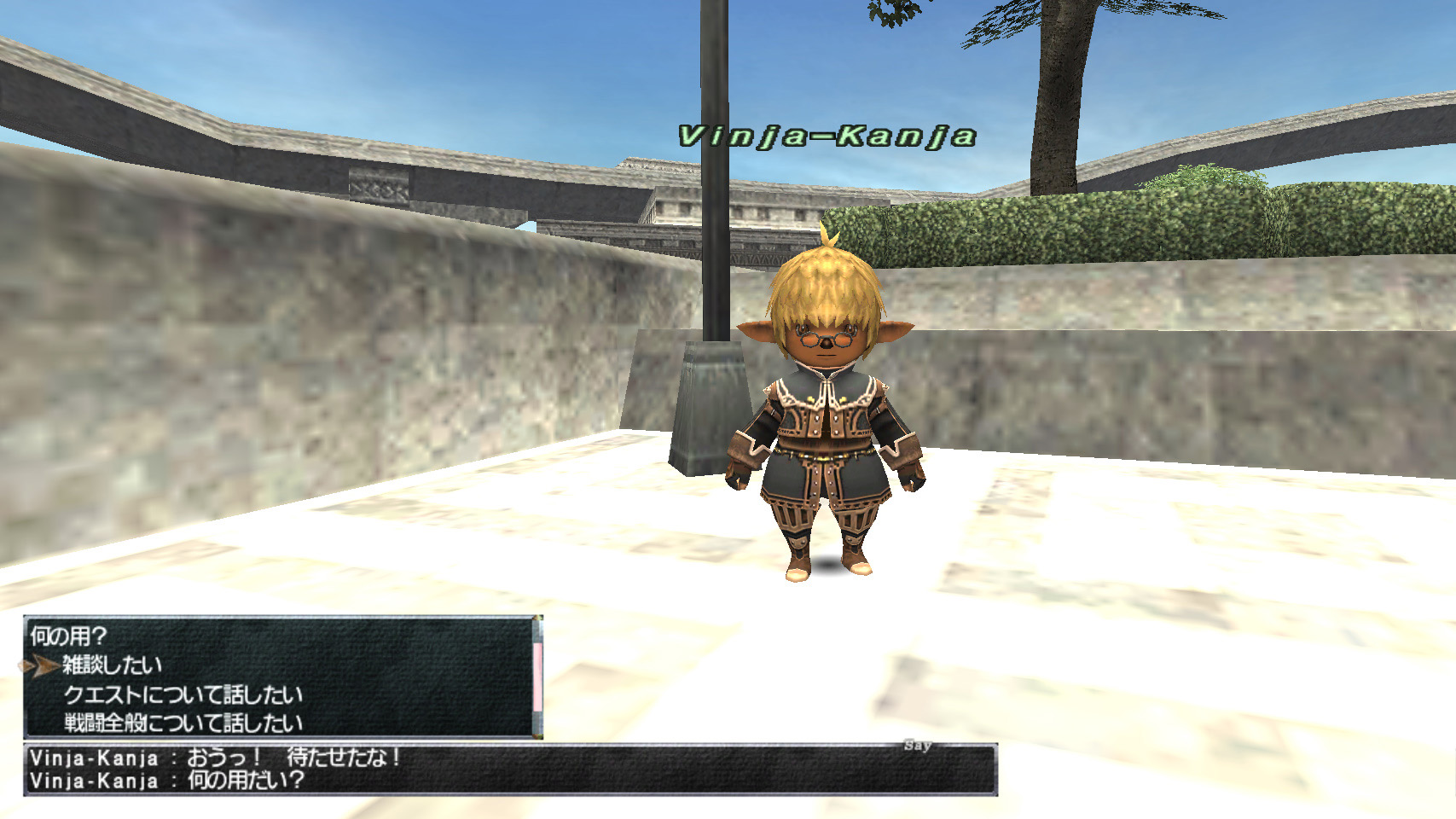
Ms. Takahashi, you joined the team before Treasures of Aht Urhgan was released, but how far along in development was it at the time?
- Takahashi
The game planning stage was pretty much finalized, and the release date had also been decided. At that point in time, however, work on the scenario had barely started, even though I think there was less than six months until the scheduled release date.
Seriously?
- Everyone
(laughs)
- Takahashi
The maps and other graphical elements were finished, but work on the actual story content was just getting started. I was quite surprised at seeing the kind of schedule that online games were made under.
In the case of a standalone game, most of the content is complete and QA testing has already begun a half year before release.
- Takahashi
Yeah, pretty much. That's what I thought too, so I remember being quite surprised at seeing how things worked with online games.
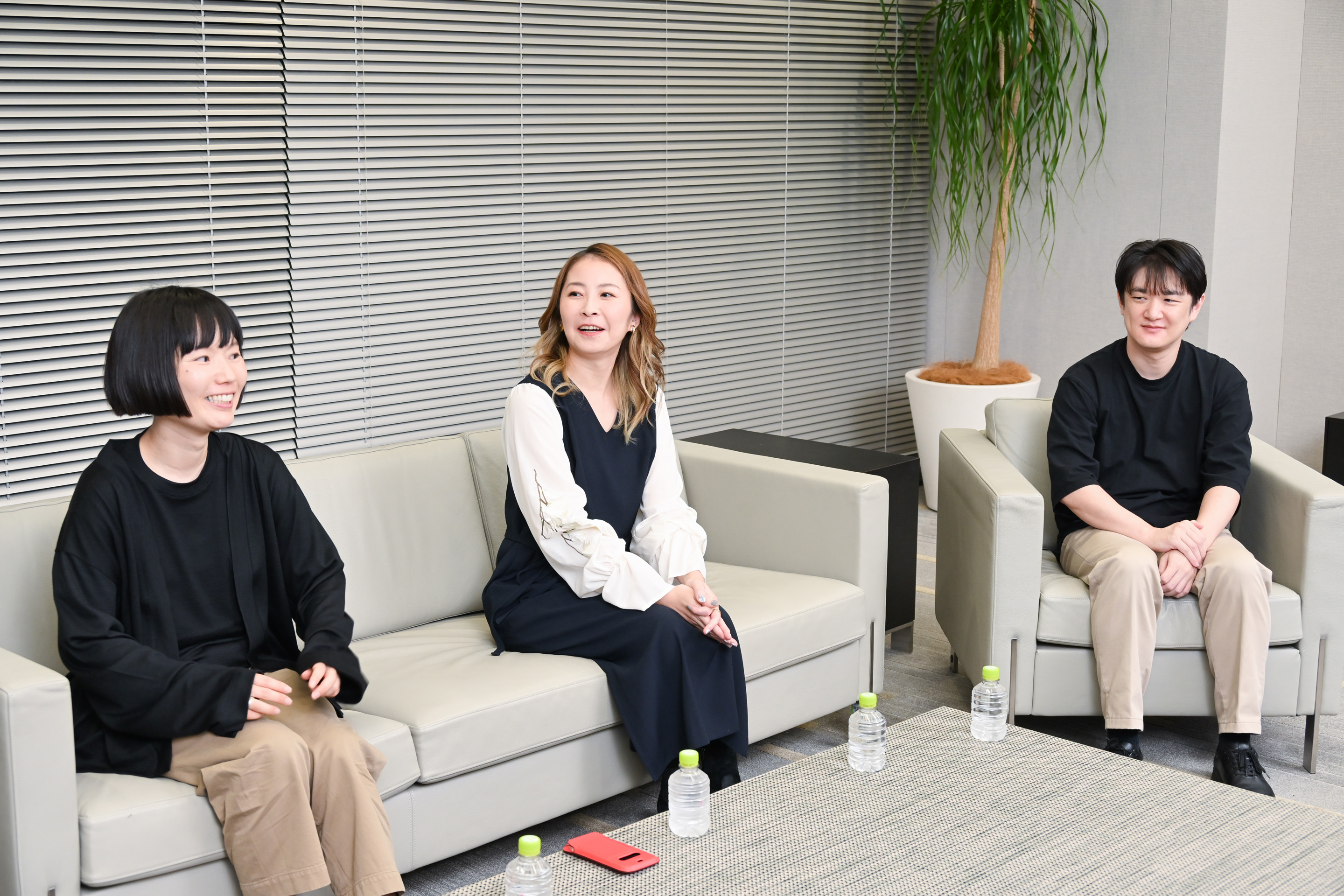
The main story was not intended to be so long
Over the course of Treasures of Aht Urhgan's development, Ms. Sato, who was the lead writer for Chains of Promathia, left the project temporarily. Were there any concerns regarding the story's creation?
- Kato
Even after Ms. Sato was transferred, her desk was still there, and there were ongoing version upgrades for Chains of Promathia, so she often came to Mr. Saito's desk and spoke with him. Furthermore, I had been working with Ms. Sato a lot more when development on Treasures of Aht Urhgan started, so I wasn't even totally aware that she had been transferred. (laughs)
- Takahashi
That reminds me, but when I joined the team, I remember Mr. Komoto saying, "There will be lots of changes within the team, but you can do whatever you like." He said, "I think it's easy for you to work on new things with FFXI because of everything you've accomplished so far, so you can work on whatever you want.'' So I was like, let's go! As a result, I never really felt that much anxiety or pressure while working on the project.
In regards to the setting, it seems it was decided early on that the map would be set in the "land of the Near East," but did the scenario team make any specific requests?
- Ishikawa
No, everything pretty much started with the map.
- Kato
We were basically told, "There's a map and we've ordered two new characters. The rest is up to you."
Were those characters Aphmau and Luzaf?
- Ishikawa
Didn't you come up with Aphmau and Luzaf, Ms. Kato?
- Kato
No, I remember that Mr. Iwao* had already ordered them. After I was put in charge of the scenario, I remember a request for final approval on their character designs coming from Mr. Aiba*.
* Kenichi Iwao, former planner responsible for FFXI's world setting. * Ryosuke Aiba, former art director for FFXI.
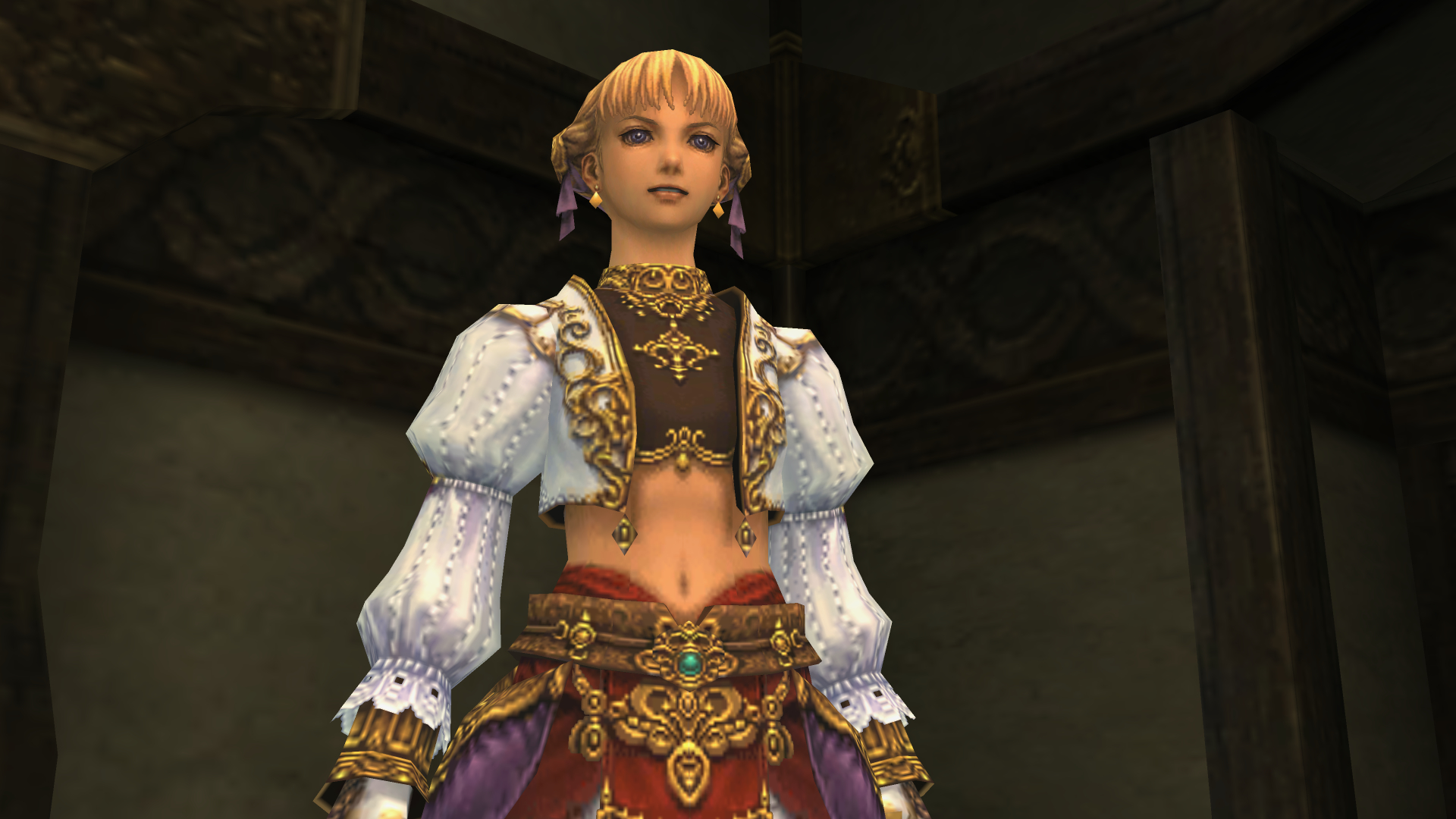
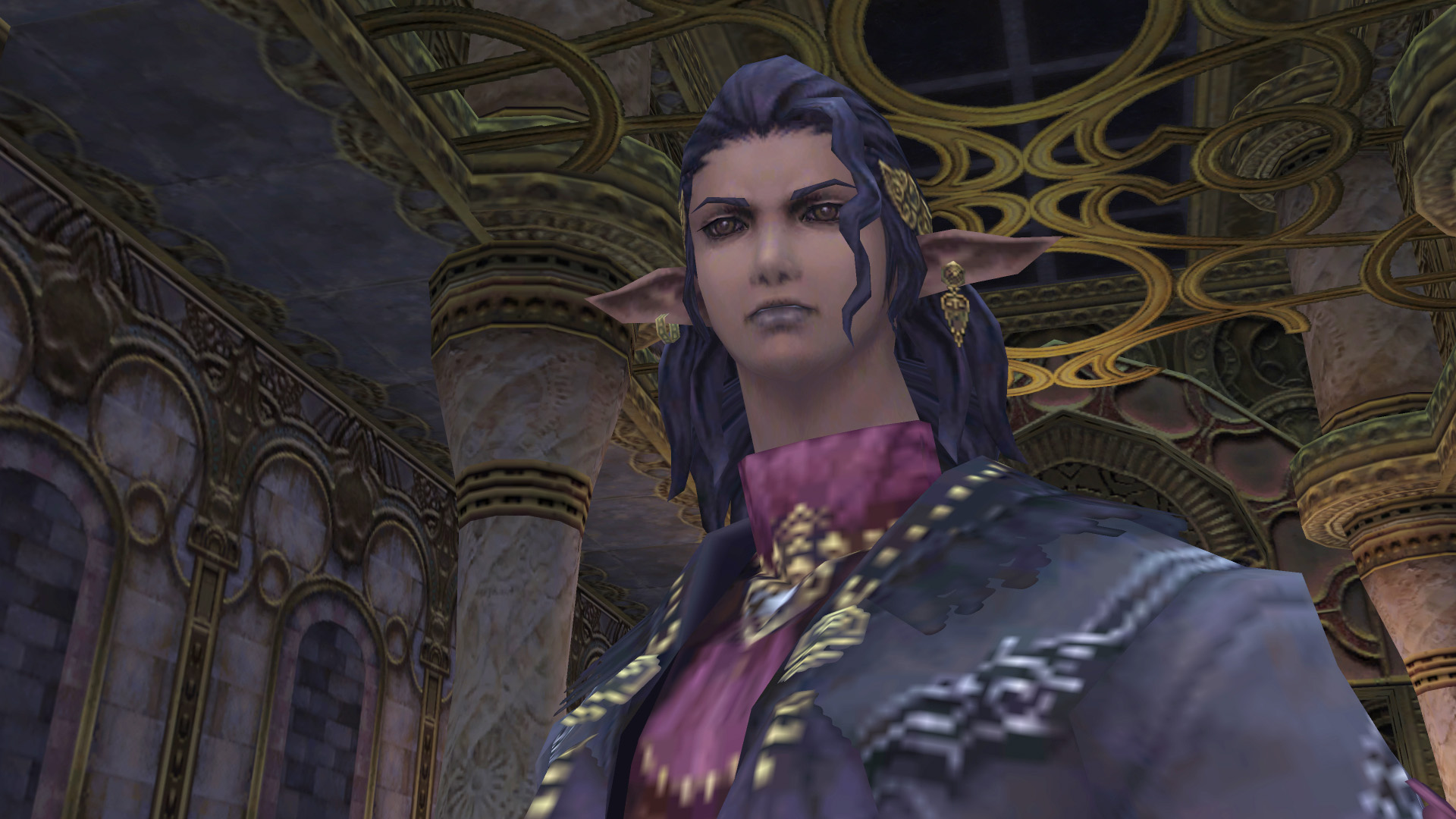
So basically, the setting and characters were already created, and you were asked to write a story based on them?
- Kato
Yes, although, early in development, Mr. Komoto said, "I have no intention of asking you to write a full-length story like Chains of Promathia had." The Treasures of Aht Urhgan expansion pack was intended to be centered on in-game content, so it was thought that the story should be about the same size as the introductory missions for the three countries.
If that was the case, then why did Treasures of Aht Urhgan end up having a full-length story?
- Takahashi
It's because all of us wanted to make something great. Mr. Saito is the same way, but everyone involved was the type of person who was very particular about the visuals and production levels of the story event scenes.
I think that attention to detail was definitely noticed by the players.
- Takahashi
To be more specific, we wrote the story's plot first. Next, we had Mr. Iwao check it and he would request some revisions. We would then make those changes and repeat the process a few times, which led to the story growing larger and larger with each iteration. Even when we tried to shorten it somewhat, we felt that the revisions made the story that much better, so we just decided to go with them.
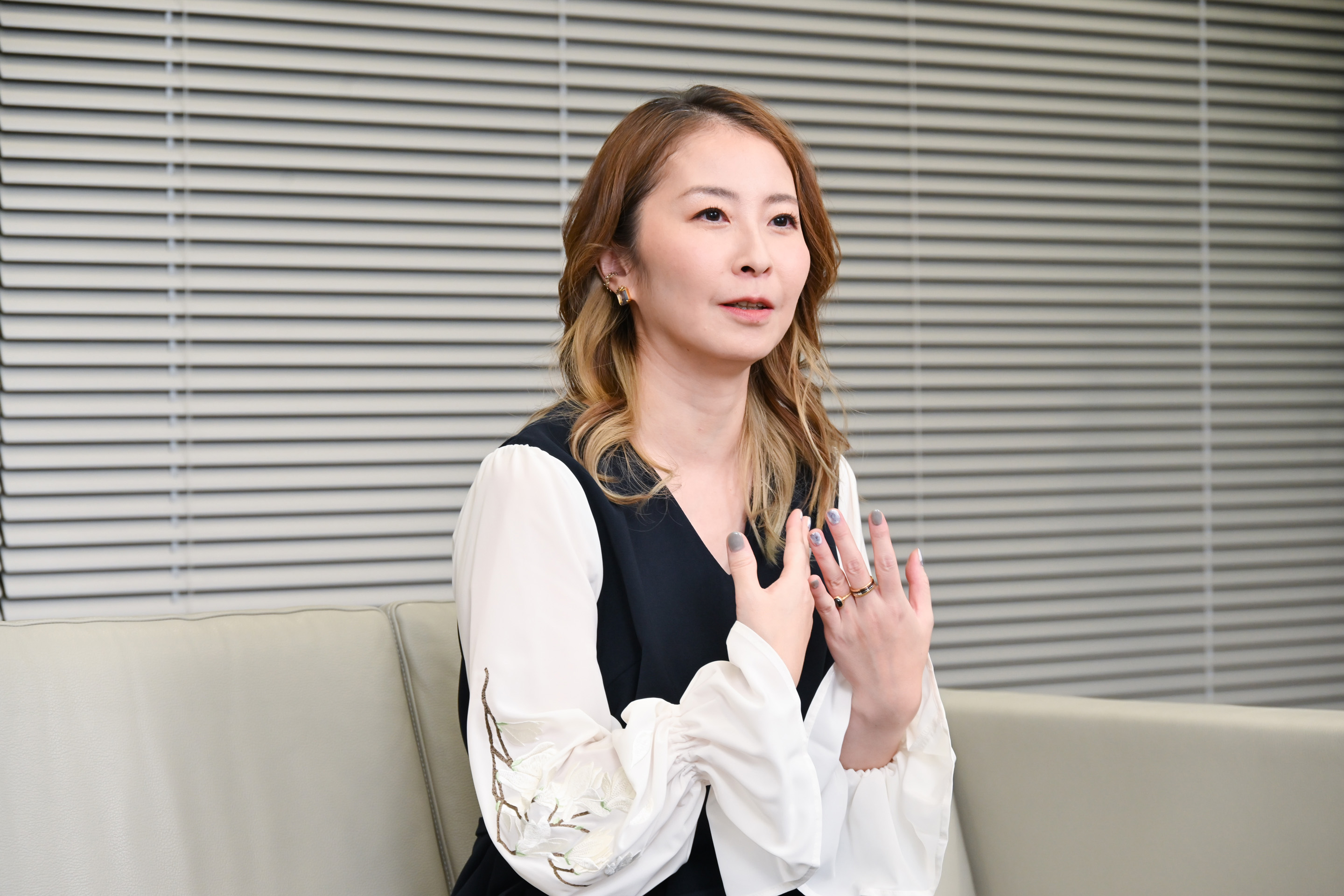
You mean that the story's current volume was due to that cycle of creation and revision?
- Kato
Definitely. The story's length as it exists now came about due to that process of trial and error, so to speak, every two to three months.
- Ishikawa
Then of course, we also created the cutscenes ourselves.
- Fujito
That's pretty much the case for everyone that is in charge of scenarios for FFXI.
- Takahashi
At the time, the people in charge of the game's animations and effects would also come up with various ideas, such as, "How about taking the scenario in this particular direction?" That led to even grander ideas making their way into the game.
How was the flow of the overall story originally decided?
- Kato
It partly came about because I hadn't really thought about writing a longer story, so early on, we had a kind of seminar along the lines of "Thoughts on the History of the Aht Urhgan Empire." Mr. Ogawa*, Mr. Saito, Mr. Iwao, and myself basically decided the history of the Aht Urhgan Empire, and then asked everyone to think of a story based on it.
* Koichi Ogawa, director of Treasures of Aht Urhgan and Wings of the Goddess. I see... So you locked down the details of the country, such as its conflict with the Kingdom of Ephramad and also its aspirations as a nation.
- Kato
We also decided on the appearance of the deities of darkness and light. I simply thought about the setting and how Odin and Alexander might be connected. So in the beginning of the process, the story's ending hadn't been decided yet.
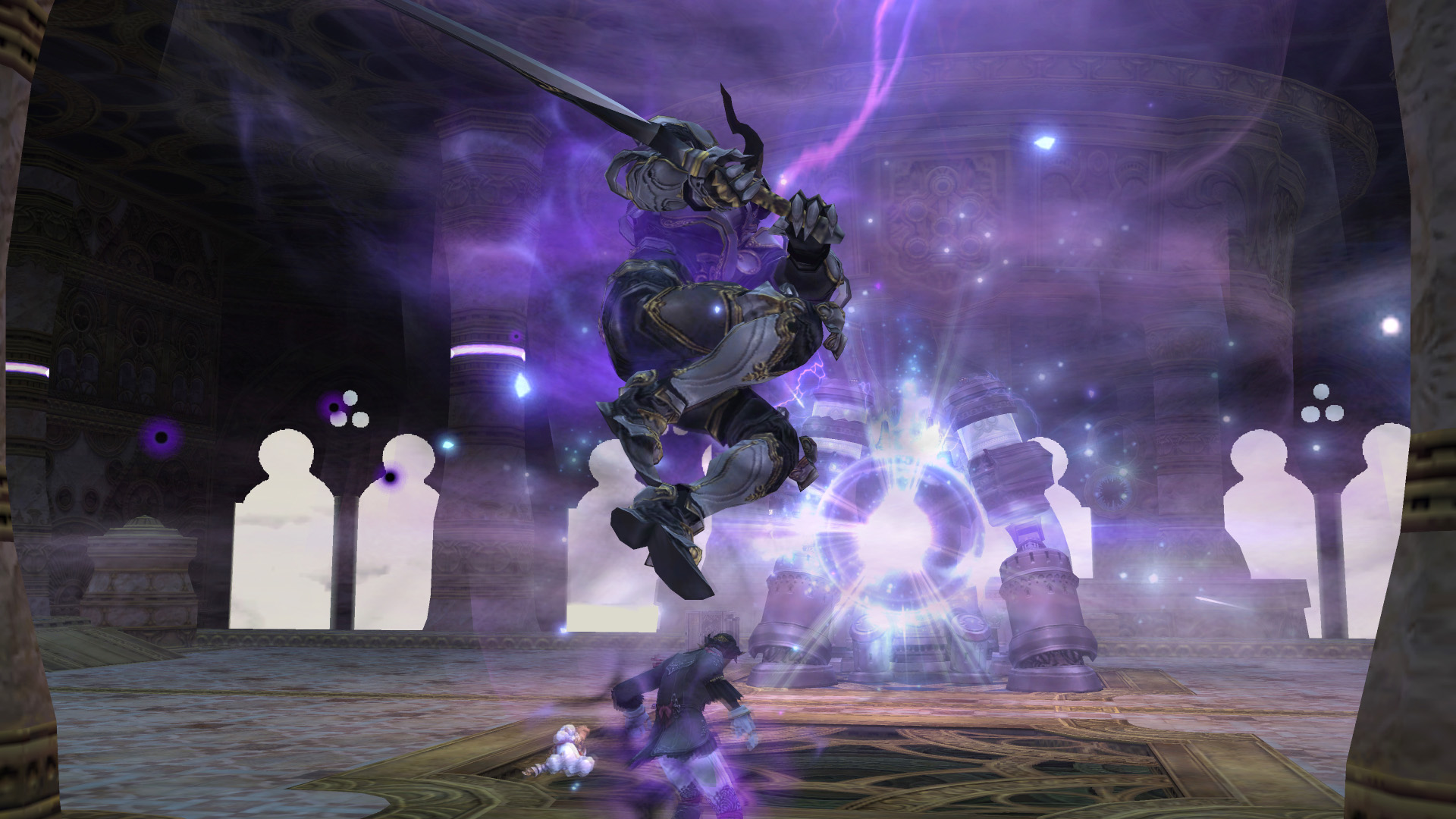
Princesses are forever lonely
Despite Treasures of Aht Urhgan's story having something of a comical twist, it also depicts more serious content, such as the empire's internal affairs and its diplomatic efforts with other countries, various characters parting ways, and also the conflict with the beastmen over the Astral Candescence. What were the theme and concept that you decided on?
- Kato
Mr. Ogawa's original image for the setting was along the lines of, "It's a brand-new country, so I want it to be exciting, with heart-pounding adventures and filled with various treasures!" The map was created beforehand, so I think it was probably a case of thinking about how to make the area more appealing and also convey an atmosphere of excitement.
So there wasn't a specific theme like "conflict," "separation," "desire," or "love."
- Kato
Well, for the main story, I wanted to depict Aphmau's determination to live as Nashmeira. When I came up with the scenario, I remember asking myself many questions: "What must a princess take on and also give up in order to become queen?", "What is it like to carry the burden of one's country on your shoulders?", and "What kind of things could Razfahd be unable to convey to the overly protected Aphmau?"
I felt that Aphmau made for a very strong third generation heroine in the game.
- Kato
This is my own personal theory, but I believe that princesses in general are destined to live a life of loneliness, so I wanted Aphmau to have a distinct innocence to help counter that sense of isolation. She simply embraced her loneliness. I also wanted to express this concept by always including the two automatons by her side.
I see...
- Kato
And because the Aht Urhgan Empire is a dangerous place due to being a country at war, numerous people die because of the foolishness caused by that innocence. Eventually, Aphmau is able to understand these things—even if not completely—and by the end, she is ready to take responsibility for everything and assume the throne. I wrote the plot and dialogue with that journey in mind for her. Hopefully, I was able to convey that in the story.
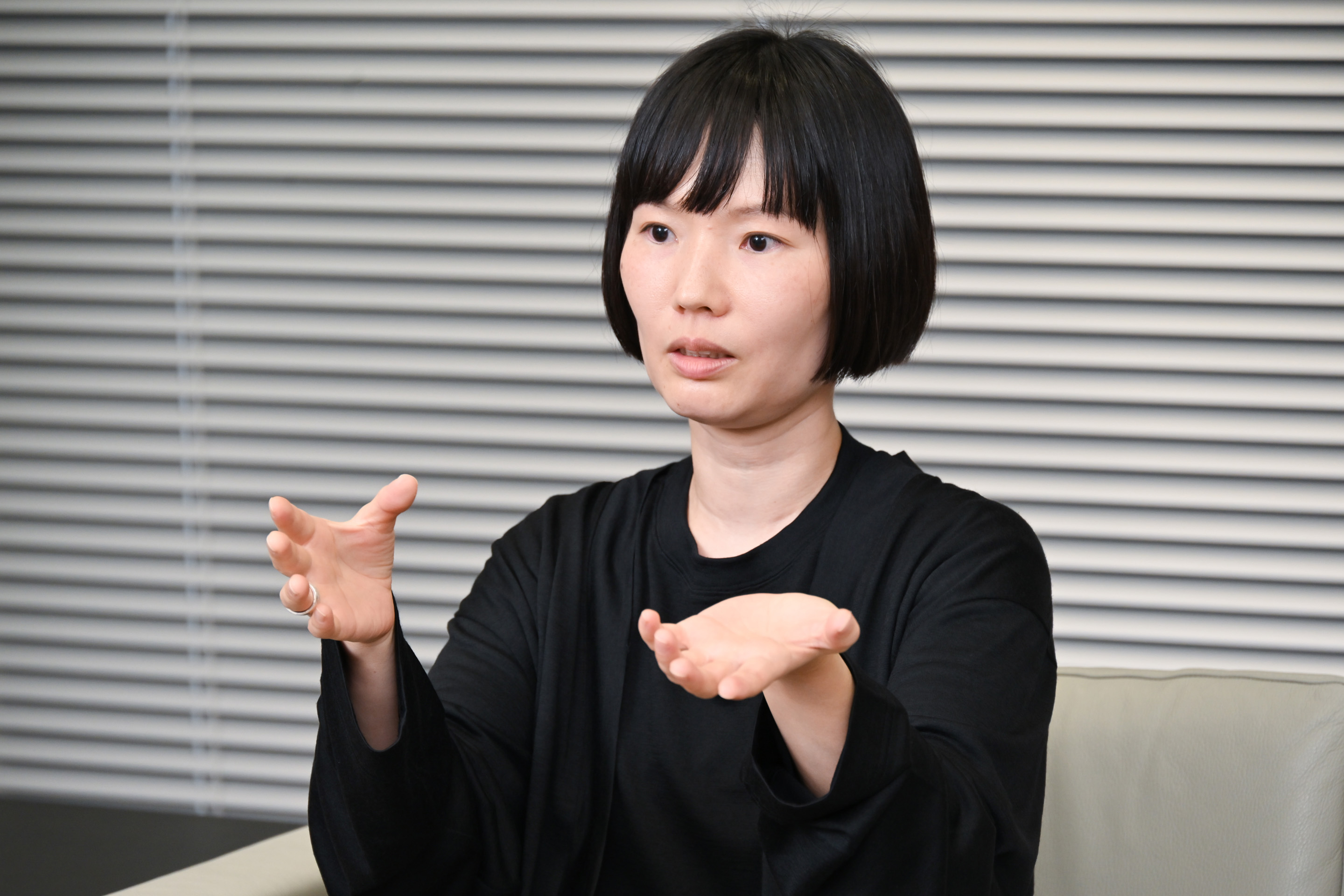
Ovjang and Mnejing were great characters.
- Kato
At first, she was only accompanied by one automaton, but I requested that she have two. At the time, I still wasn't exactly sure where I wanted to go with it, so I just felt like, "I want to use everything I possibly can!"
- Ishikawa
How did the idea of the automatons speaking come about?
- Kato
I simply decided that she should have automatons with her, and I think they simply started speaking as the production process went along. While coming up with the story, Mr. Iwao was completely on board with the way things were going, and said I could even make Ovjang's face into a monitor.
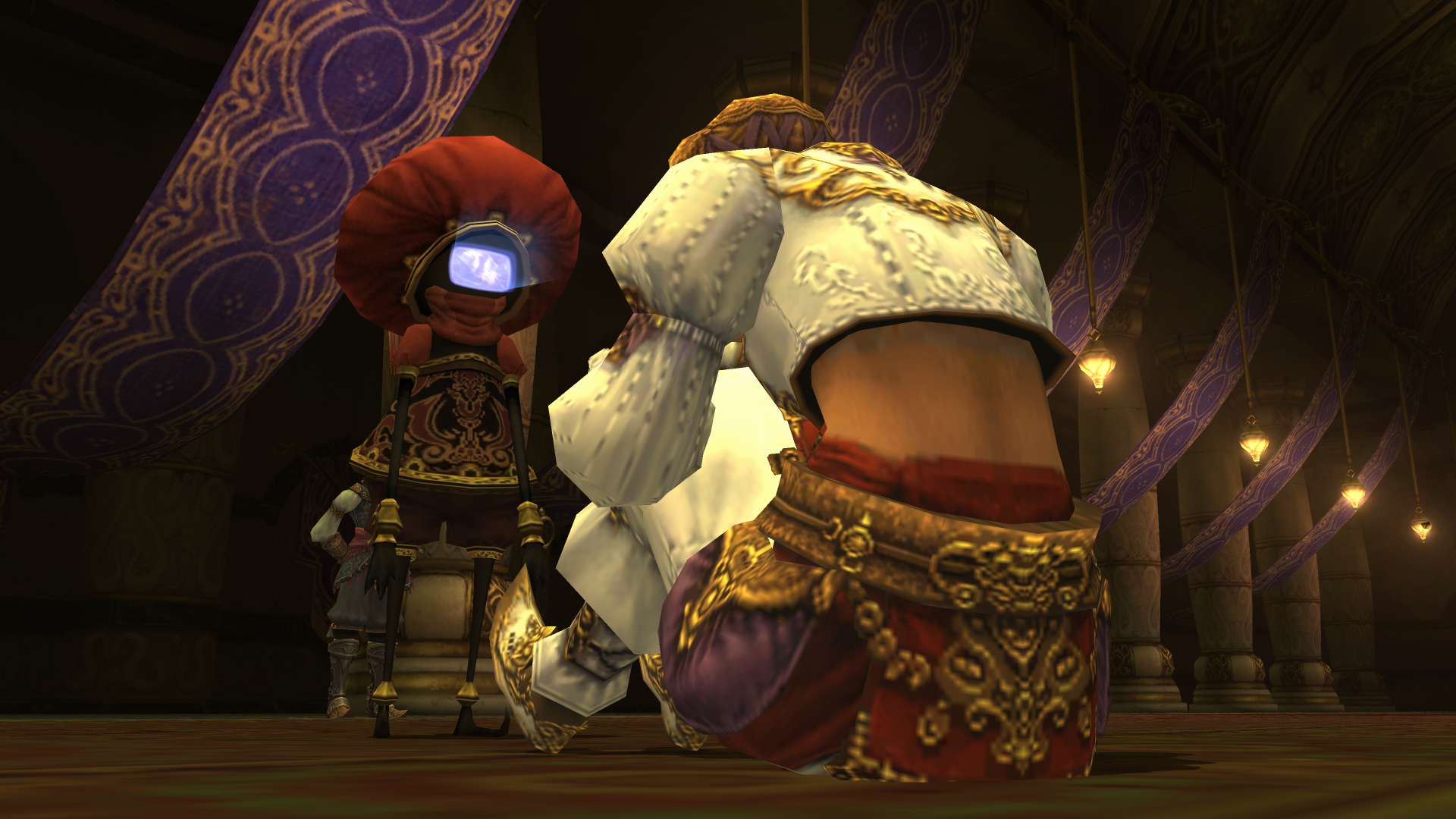
Another major feature of Treasures of Aht Urhgan is the comedic developments for President Naja and other unconventional characters.
- Ishikawa
The more serious story details are written by Mr. Iwao, and the more "comedic" ones were probably our doing. (laughs)
How was the character of President Naja decided?
- Kato
The idea that she was the president of a mercenary group existed from the very beginning, but when I was reading another part of the story, it said that Trion became a mercenary. I felt that if she's the type of person that could make the prince into a mercenary, I had to give her a more forceful personality.
- Takahashi
Now that you mention it, I think it was Mr. Saito who gave President Naja her morning star.
- Kato
After I wrote the dialogue, Mr. Saito handled the storyboards and added the camera direction. That's how everything flowed, so Mr. Saito often brought interesting ideas to the process. You know, things like, "Wouldn't it be interesting if we gave this person such and such?" or "What if she stood like this?"
You mentioned earlier that the ending had yet to be decided during the early stages of the story's creation, but what about the character of Luzaf, who was one of the main characters?
- Kato
The setting was that he was a prince from a kingdom that was annihilated by the Aht Urhgan Empire, and that he had been brought back to life. Although, there was not much else decided about him aside from those key points.
The Five Serpent Generals quest was ordered by Producer Tanaka
Treasures of Aht Urhgan features many unique and memorable NPCs, including the likes of the Five Serpent Generals, Gessho, and Abquhbah. Can you tell us how these characters came to be?
- Kato
I distinctly remember Mr. Saito making Abquhbah that type of character.
- Ishikawa
Who came up with Gessho again? I feel like he was around from the beginning...
- Kato
Yeah, Gessho was included in the character list from the start. I think his character setting was something along the lines of him being a "spy," but since I was fond of "talking animals," I wanted to introduce as many as I could. (laughs)
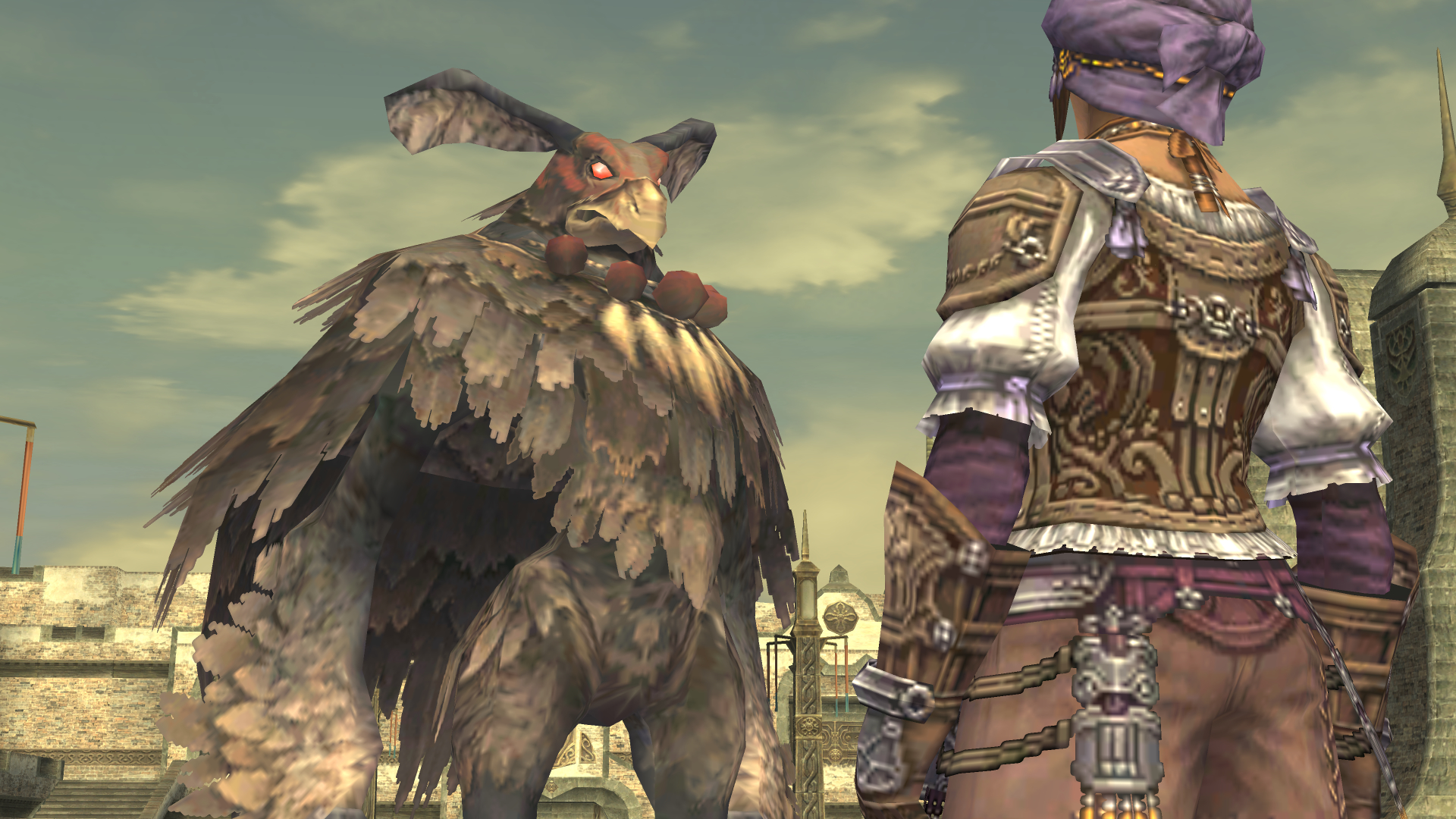
- Fujito
That reminds me that it was actually Ms. Kato who developed the Qiqirn language. So when it was decided that Chacharoon would appear in Seekers of Adoulin, I consulted with Ms. Kato about his lines.
What about the Five Serpent Generals?
- Ishikawa
The Five Serpent Generals were designed from the beginning as characters for the in-game content known as Besieged.
- Takahashi
Yeah, they were NPCs made especially for the battle content.
- Fujito
The Five Serpent Generals quest came later, but that was an order from Mr. Tanaka*.
* Hiromichi Tanaka, the first producer of FFXI. What?! From Mr. Tanaka?!
- Takahashi
Mr. Ogawa told me that Mr. Tanaka said, "Since the Five Serpent Generals are popular, I want you to make a quest for them." (laughs) That was followed by, "So, who's free to work on it?" It just happened to be around the time my work on the corsair quests was finished, so I said, "Okay, I'll do it."
So you came up with the detailed backstory of the Five Serpent Generals?
- Takahashi
I feel like Mr. Iwao came up with the original setting first, and then I added to it as I worked on the quest's scenario, while running the changes by him for approval. So topics like the revealing of Mihli Aliapoh's past during the quest were added in such a way.
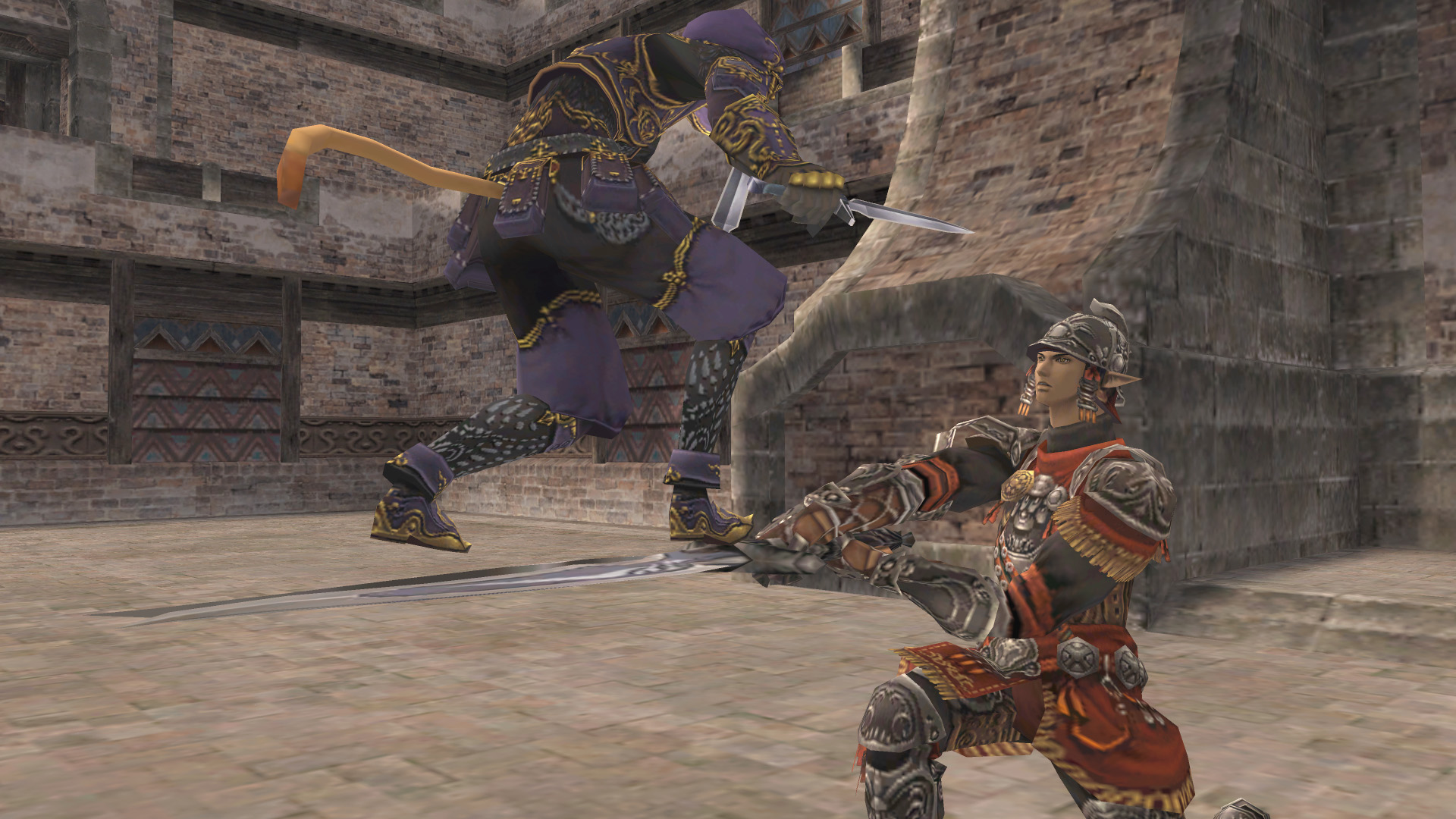
What was the process behind adding Shantotto (Karababa) to the story? Let me guess... Was it because Shantotto was such a popular character?
- Kato
There was a limit on how many unique character models we could request, so I think it was probably the result of asking ourselves how we could make use of preexisting assets in order to liven things up. By the way, there is a rule that if we want to use existing NPCs, the person responsible for them has to supervise the process, so I had to submit Karababa, Trion (Raillefal), and Cid to Mr. Iwao for his checks, and Ms. Sato, Mr. Kigoshi, and Mr. Komoto had to take a look as well.
- Takahashi
In addition to the problem of limited resources, there is nowhere for the story to go in the future if we simply focus it on a country far removed from the previous setting and then bring it to an end. That is why we like to focus on stories that are merely an extension of the existing world or depict things like the relationships between countries and the overall situation in the world, so that we can add depth to the story that way.
Is there anything else from your work on Treasures of Aht Urhgan that made an impression on you?
- Ishikawa
For me personally, I think I would have to say the puppetmaster artifact quests. Initially, the story was focused on Ghatsad, but I decided to rewrite it during the production process and that's how it ended up in its current form. There was also an early proposal to have puppetmasters and the other jobs acquire relic armor through quests rather than Dynamis. As a result, I was told to write a story that would connect to the next quest (even after the artifact quests were complete).
What kind of story did you have in mind at the time?
- Ishikawa
There is a young Mithra girl (Kuh Polevhia) who adores automatons in the puppetmaster's artifact quests, and the plan was for her to eventually make clothes (relic armor) for the player. I was also thinking of a scenario where the girl returns to Al Zahbi and defeats all of the guild masters in battle. (laughs)
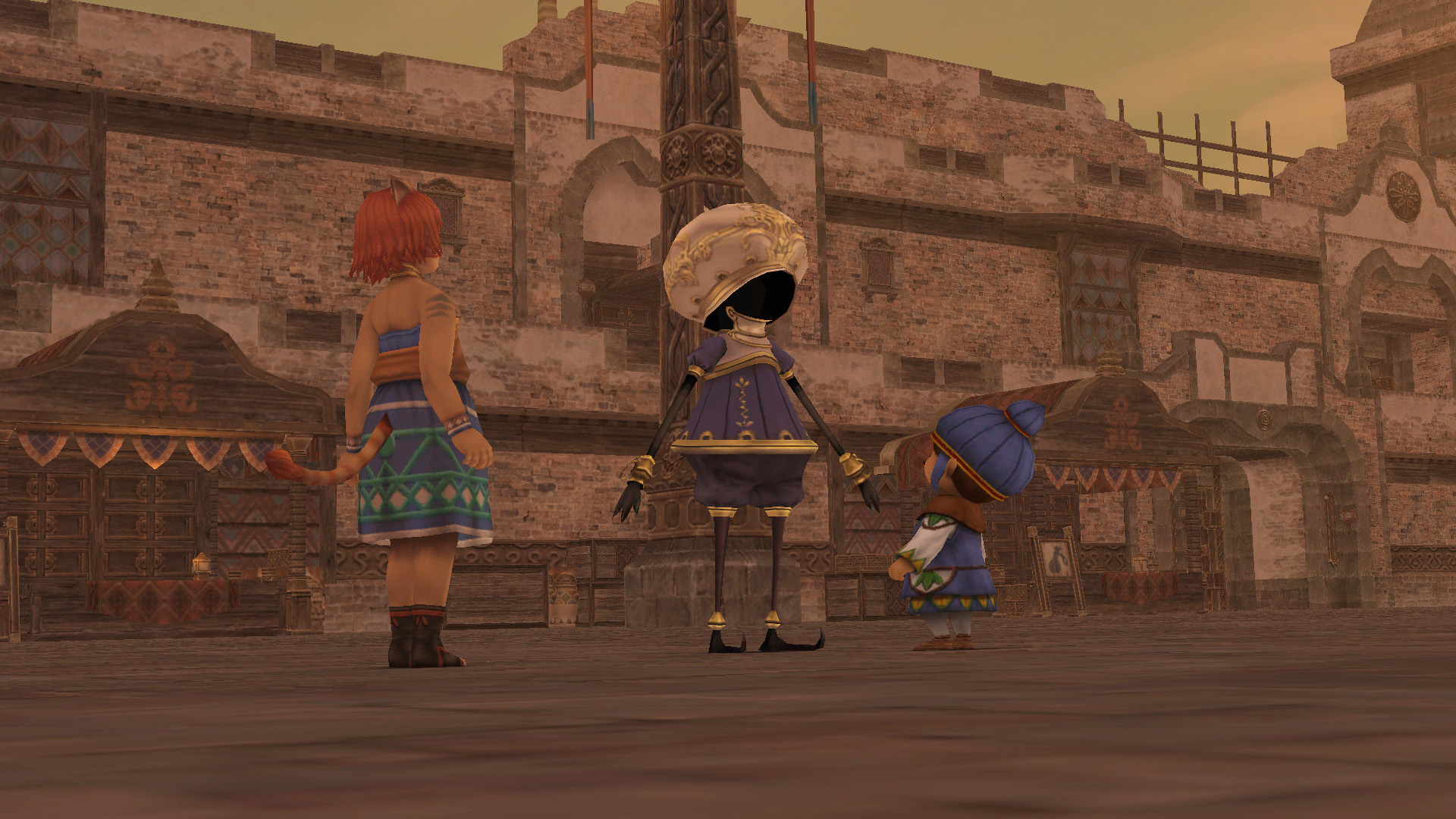
Ms. Takahashi, I heard that you were in charge of the corsair quests, but who was responsible for the blue mage ones?
- Takahashi
It was Mr. Saito.
- Kato
I remember Mr. Saito spoke to the effects team about having the blue mage's quest include a scene where the character regains consciousness and is able to see again, and he was super happy when he was told that they could do it.
Speaking of scene direction, the climactic event scene in Treasures of Aht Urhgan is also quite memorable.
- Kato
What I remember most is the farewell scene with Razfahd. I wanted to create a space specifically for that scene, but it was too difficult due to the costs involved. I was worried about what to do with the scene when I heard that Ms. Hatae* was going to help me come up with something through the use of effects! When I actually saw the finished scene, I was amazed at how it turned out.
* Yuko Hatae, designer of various character and background effects.
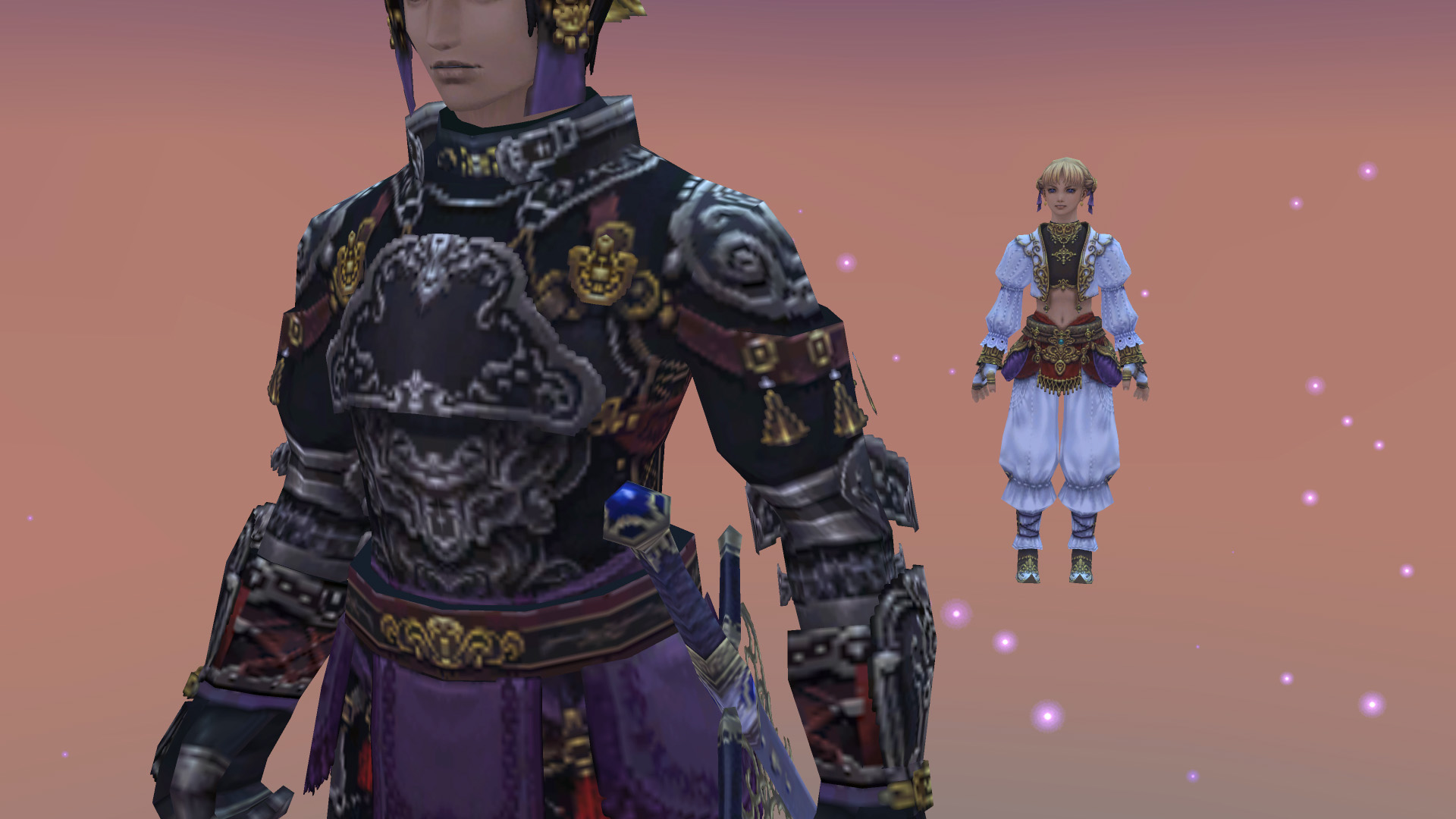
- Takahashi
Whenever I'm in a jam, Ms. Hatae usually helps me get out of it too. (laughs)
- Fujito
And that's still the case today. (laughs) She's helped out a lot on The Voracious Resurgence as well.
In that particular scene, it's rather sad that Razfahd's voice isn't able to reach Aphmau.
- Kato
Actually, in the initial stages, Mr. Iwao asked that the lines just be "..." from start to finish, so Razfahd's voice didn't even reach the players. (laughs) I basically had to tell Mr. Iwao, "We'll never be able to understand the meaning here! Can you please let me add some dialogue?" After that, I was able to add some lines to the scene.
The story then comes to its grand finale, but how was the ending decided?
- Kato
We all consulted on it together. I'm glad that we were able to wrap it up in the end.
FFXI's highly flexible scripting system
When I think of Treasures of Aht Urhgan, I am especially impressed by the unique game mechanisms in the promotion tests designed to boost your mercenary rank. Who was responsible for creating those?
- Takahashi
I feel like we took turns creating them in order. I made a few of them myself.
- Ishikawa
It wasn't all of them, but I did create many of the mini-game elements, such as the push-ups that were featured in the Promotion: Sergeant Major test.
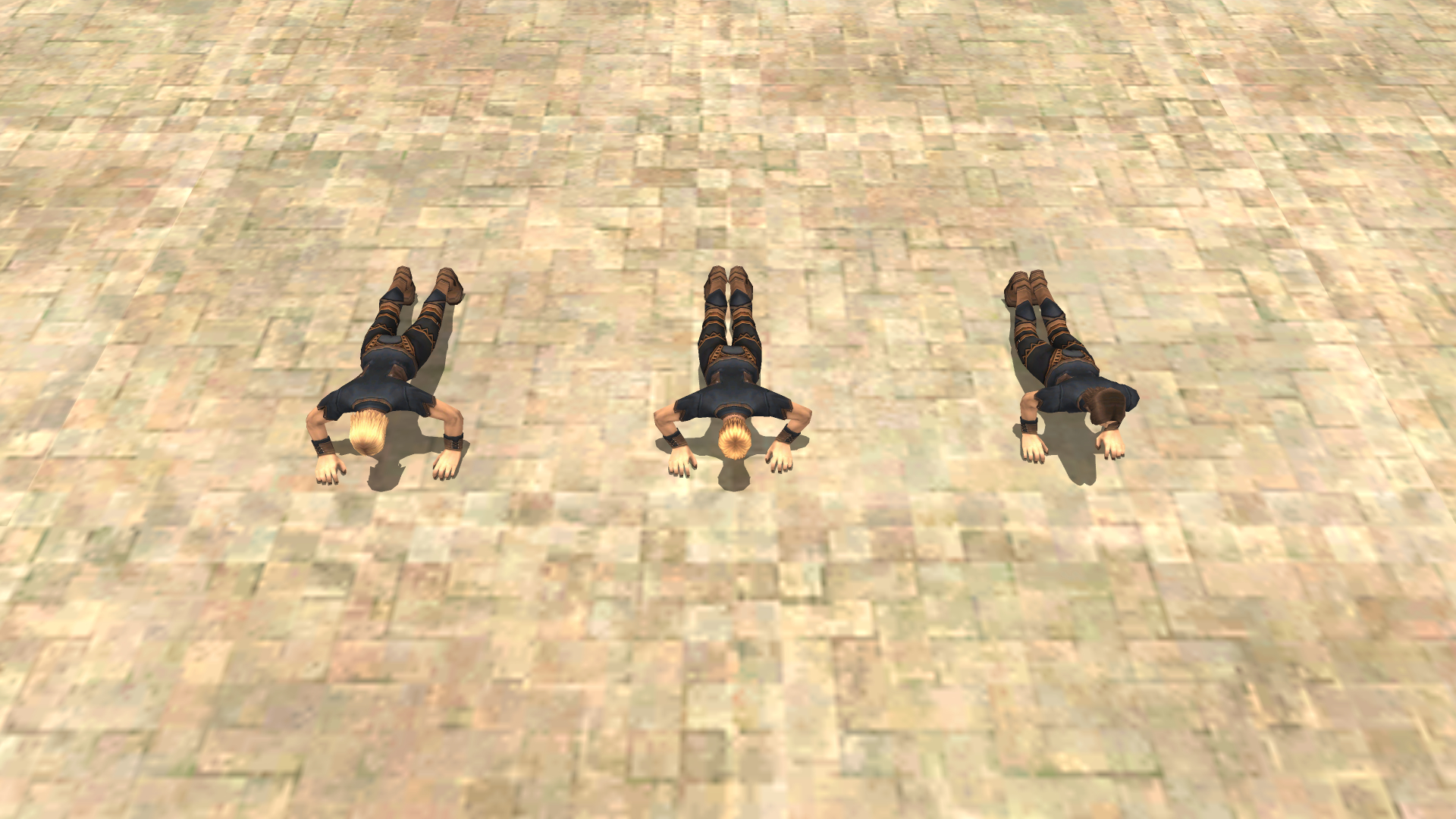
Some of the mini-games were pretty tough.
- Takahashi
I think I might have overheard the in-house QA (quality assurance) testers saying they could never successfully complete them. (laughs wryly)
- Ishikawa
I personally thought I was being pretty lenient with the difficulty too...
- Fujito
In regards to that group of mini-games, I was always impressed that the team was able to use FFXI's scripting system to create something like that.
They featured numerous approaches and gameplay elements that were somewhat different from the rest of FFXI.
- Fujito
In FFXI, it was pretty much impossible to do anything in real time during an event scene.
- Ishikawa
Yeah, because you could only display dialogue lines during them.
- Fujito
That meant there was no system designed to create mini-games like these, so I thought it was amazing that they made it happen, even if they were essentially forced to fake it.
- Ishikawa
Whenever you can add something good to the scripting tools, you always want to try and find a way to work it into the game.
- Fujito
It all started when Mr. Kigoshi created the system for areas like the boss room and the seal battlefield. In FFXI, you can do a lot of things with scripts, which helped foster an environment where game planners could implement their ideas without the need of a programmer. Although, that ultimately meant that the planner had to also manage the layer system, which led to a lot of extra work. (laughs wryly)
- Ishikawa
That's the truth. I ended up creating all of the entrance mechanics for both Assault and Salvage by myself.
In closing, can you please share your feelings on what Treasures of Aht Urhgan means to you?
- Kato
Treasures of Aht Urhgan was the first time I had ever written a full-length story, but with the help of people such as Mr. Ogawa, Mr. Iwao, and Mr. Saito, and also working alongside my fellow colleagues such as Ms. Takahashi and Mr. Ishikawa, I was able to experience what it means to work together as a team. Before this project, I had only been working within small groups, but this forced me to interact with numerous people all at once, which was an excellent way to gain experience.
- Takahashi
I thought it was interesting that the story was set in a relatively uncommon location known as the Near East, and since it was my first time working on an online game, I was impressed with how the game received updates every two to three months. When combined with the fact that players were able to give me their feedback immediately—which was quite different from working on standalone games—I found the whole experience to be very encouraging and I learned a lot from it. I was very lucky to be placed in such an environment.
- Ishikawa
I feel proud that I was able to give my best in the main aspects of Treasures of Aht Urhgan, and I still have many memories of all the hard work I put into the project. The reception from the players was great, and I think it's safe to say that out of all the titles I have worked on, Treasures of Aht Urhgan is the one I feel they responded to the most.
